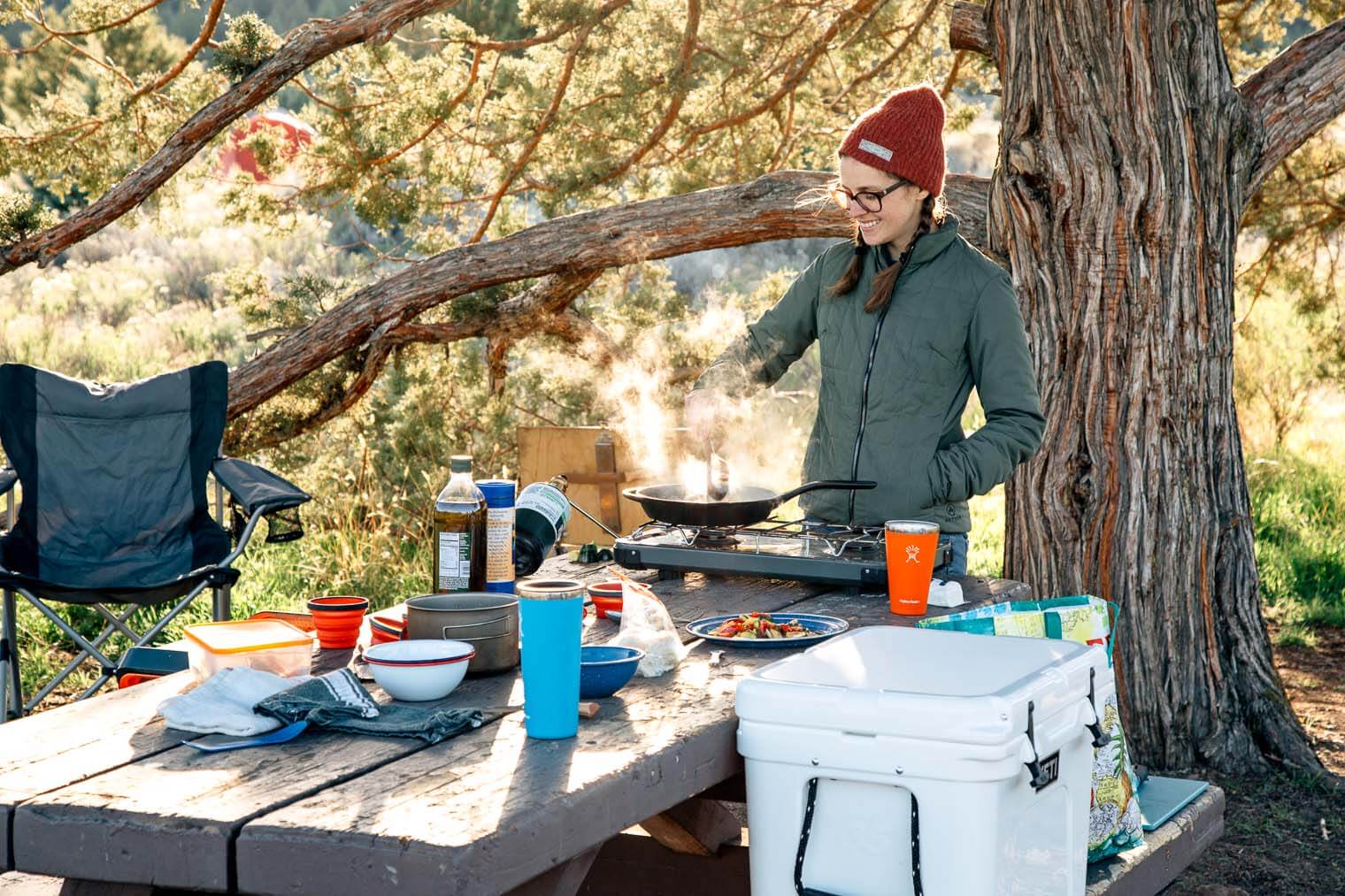Five ways to elevate your campfire cuisine, plus a delectable, clean recipe
Summertime is synonymous with venturing into the outstanding outside—trekking, mountaineering, kayaking, and tenting. But simply due to the fact you’re communing with Mother Nature, you shouldn’t devour stale granola bars and burned Ball Park Franks. James Forbes, co-owner of North Country Charcuterie and an avid camper, stocks a way to master the smoke and sizzle of cooking over a live fireplace.

1. Bring the skillet and tongs
It all depends on what you’re cooking, but tongs are usually useful. If you’re vehicle-camping, an iron skillet is helpful due to the fact you may cook dinner with it on a grate or at once on the coals. Potholder or cotton towels are necessary.
2. Prep at domestic
As a great deal as feasible, plan and put together your meals in advance of time so that you convey only what you want. You don’t need to carry extra into your campsite than necessary.
3. Cook on coals
Cooking over a hearth isn’t tons exceptional than cooking on a range, except you have to be extra cognizant of your heat source. An even layer of coals is a great source. Flames are fun but often leave a whole lot of creosote for your pots and pans—a real ache to ease off.
Creating flavorful low sodium recipes can be a daunting project, even for the maximum skilled cook. Achieving flavorful low sodium recipes can seem not possible for the brand new cook dinner. Someone who is simply getting to know a way to cook and now could be advised to cook dinner without salt may additionally sense hopelessness. What to do? Just know there are many methods to feature flavor to low sodium recipes. Learning to apply this one cooking tip, in reality, a cooking method will assist triumph over bland and turn low sodium recipes into extra flavorful meals. This outstanding cooking method is known as browning or caramelizing.
Learning to brown your meals is so essential to cooking rich, flavorful, low sodium recipes. It will not count the number if you are browning meats, greens like onions, even sparkling garlic or tomato paste. Browning also adds a sweetness to veggies and enables mellow out any sharp tastes. Taking the time to do that one step will make a large distinction with the richness and intensity of color and flavor, especially low sodium recipes.
Browning for the nice results method uses a heavy or medium-heavy pan, Dutch oven, or skillet over low, medium-low warmth. Not over a medium-high or excessive warmness for this procedure (as a minimum, no longer until you benefit some cooking enjoy). Take it slow. Most oldsters generally tend to brown too speedy over too high of a warmness and burn instead of brown. We are not searing here; we are attempting a slower, richer, browning approach. It would help if you had a pleasantly rich, caramelized effect for the satisfactory, richest taste.
If your browning begins burning, forestall. Take the pan off the warmth, off the burner. If what you’re cooking is burnt, you may want to prevent and begin over even though simply barely burnt. That includes wiping out the pan with a paper towel, and if the usage of oil, get fresh oil. Don’t just pick out the burnt portions. The burnt flavor will still stay within the oil. After all, what you have started to burn is probably just a few onions or a bit of garlic. Not too high priced to throw out and start over. Don’t try to shop for something burnt here because the cooking technique wily magnifies the burnt flavor.
When you are cooking without salt, you really need to pay attention to flavor and not jeopardize the taste of the dish with a slightly burnt or scorched flavor. It’s simply not well worth the risk of ruining the recipe. Start over. Try to brown meats honestly nicely, in particular before starting a soup, stew, or maybe before including to a crockpot or stress cooker. The browning adds a top-notch richness and a pleasant taste to the broth or sauce, mainly in low sodium recipes.
This browning approach additionally allows the food to look extraordinarily rich and appetizing. When meals appear desirable, they will flavor better. Many parents have trouble with their appetites on a low sodium weight loss plan. They are complaining that the food does not taste precise. So frequently, it is clear because the food would not look exact. It is pale and unappetizing. Taking the time to make that one cooking approach will distinguish in both look and taste. Remember to allow your food to brown and take your time while browning. This is one of the most basic and one of the maximum vital of all cooking guidelines and could make a massive distinction closer to greater flavorful low sodium recipes.




